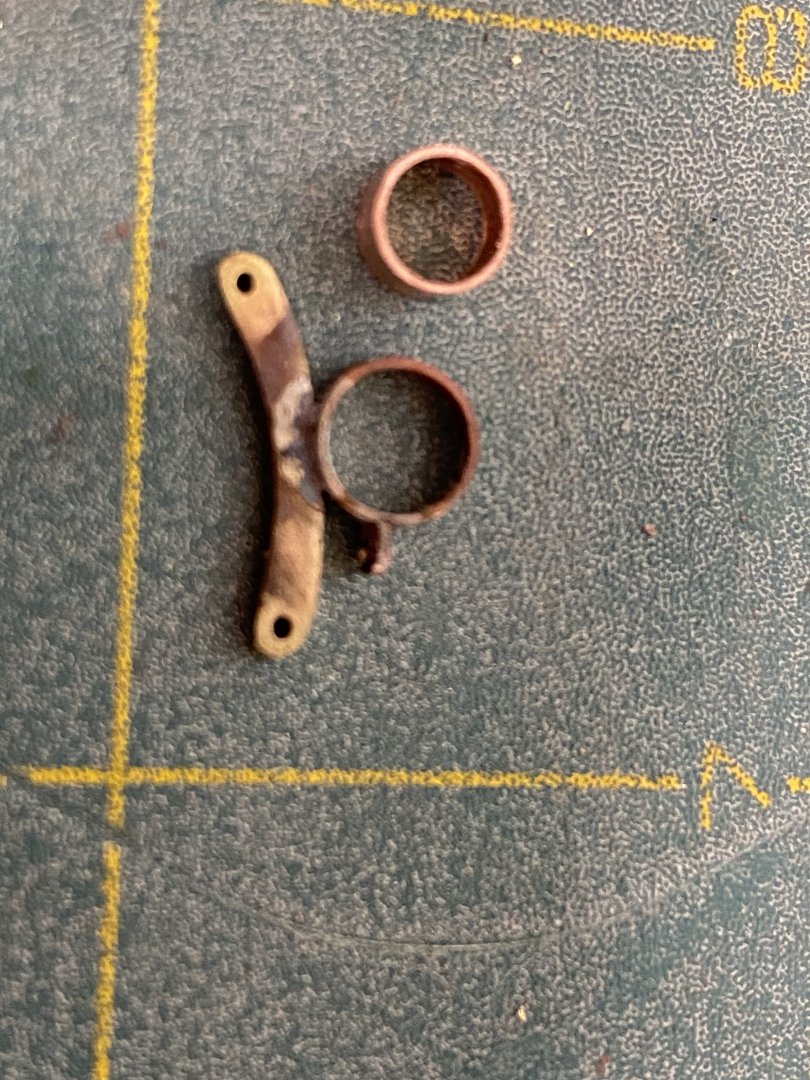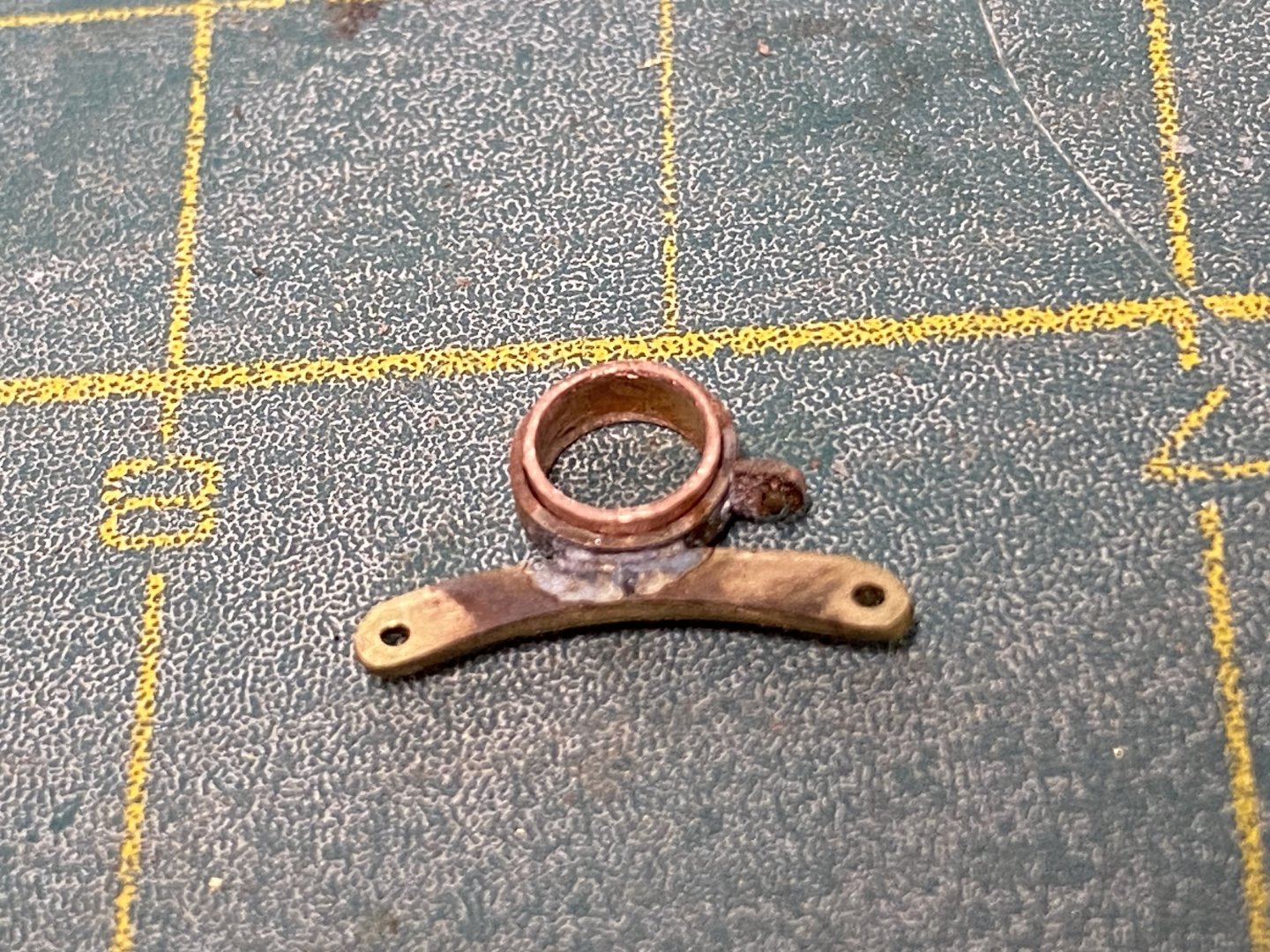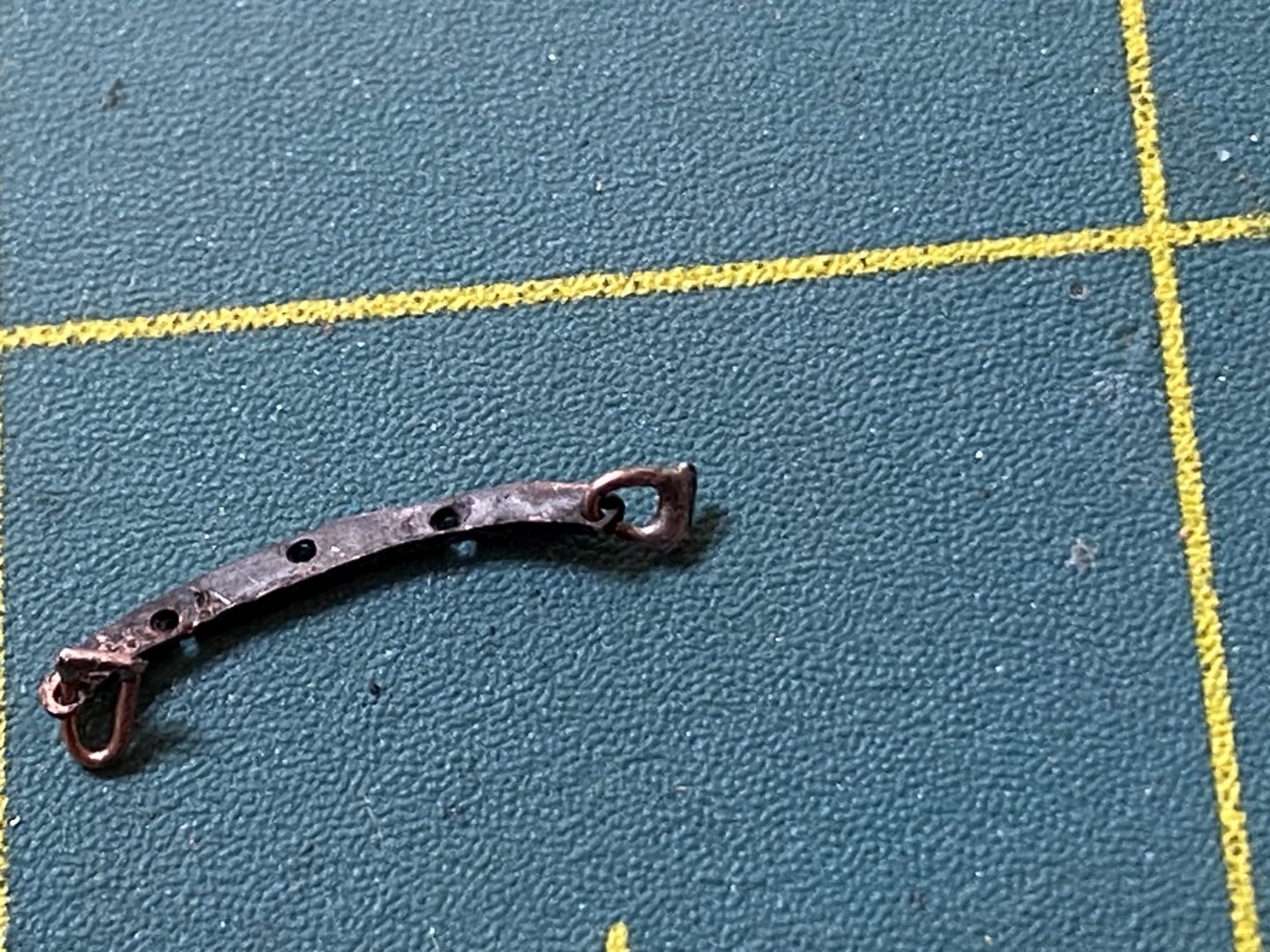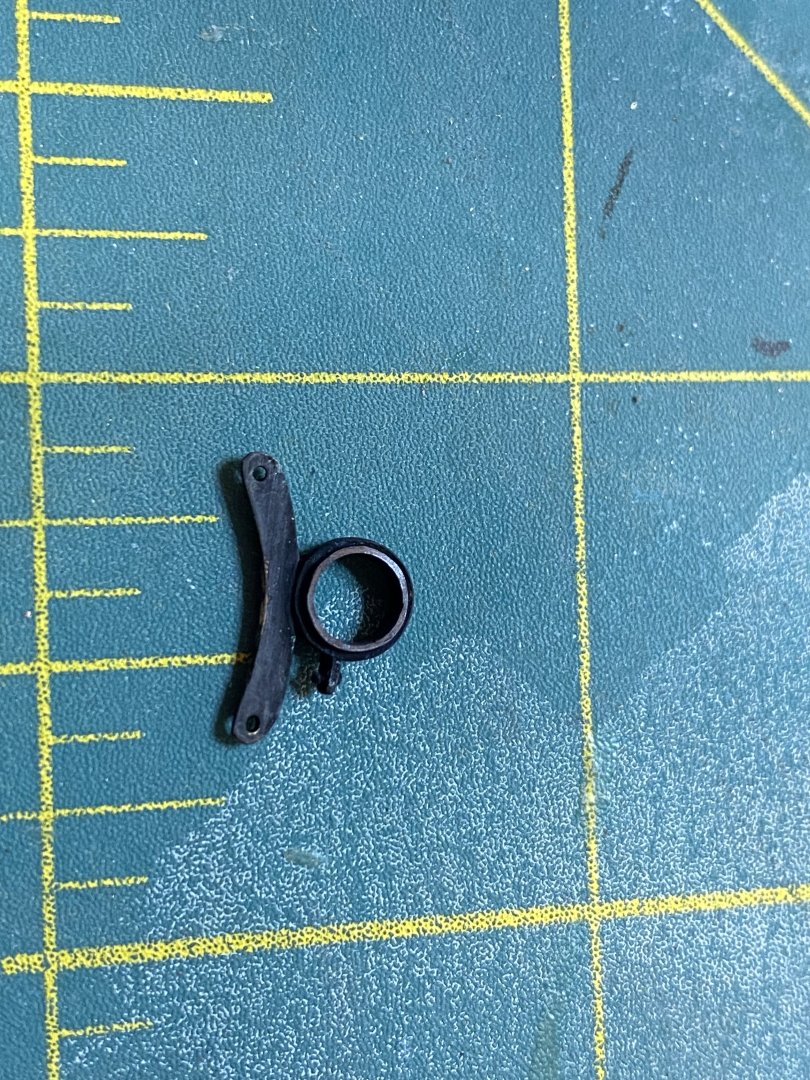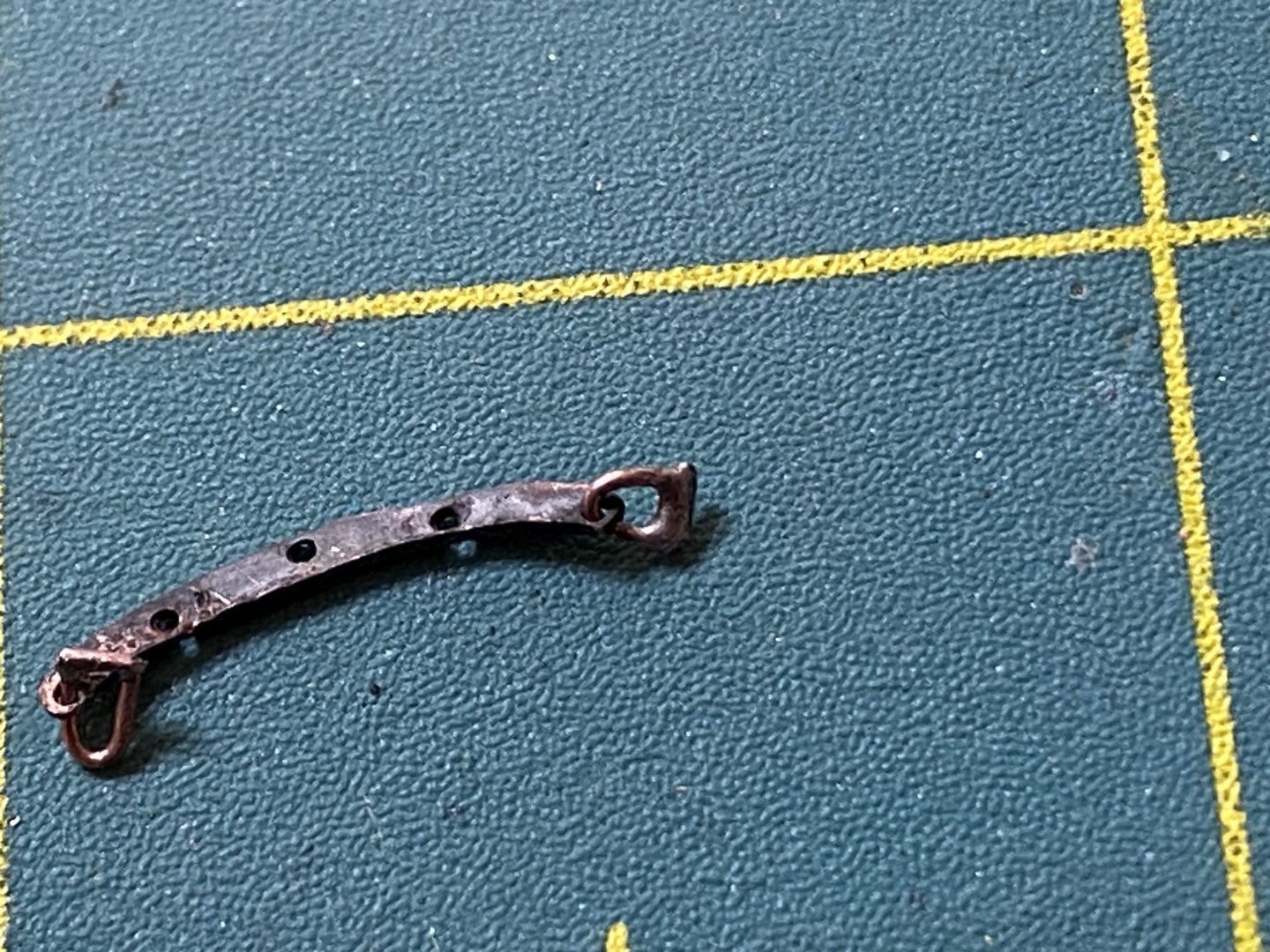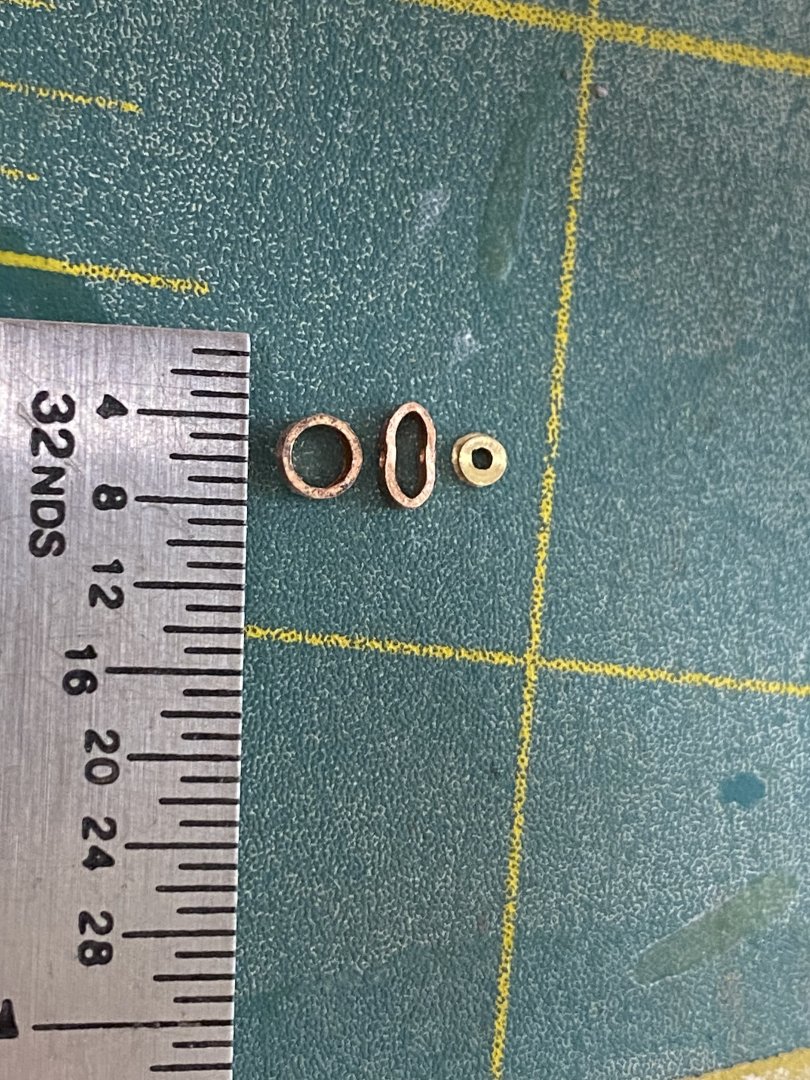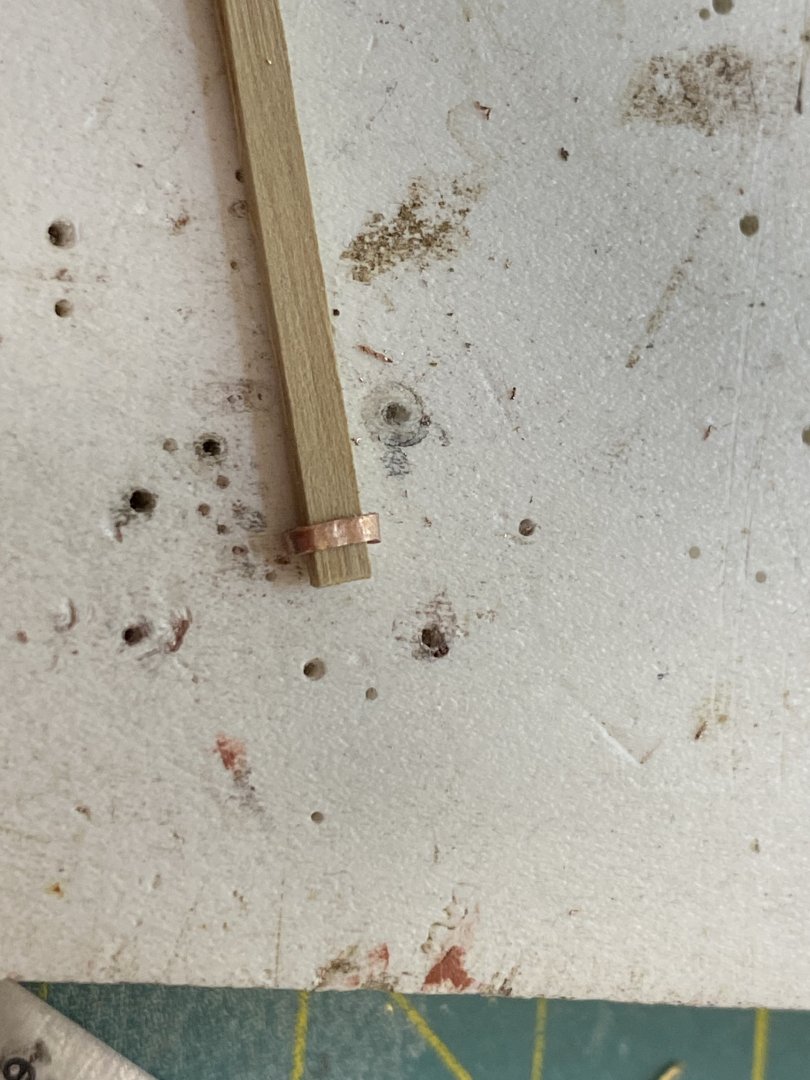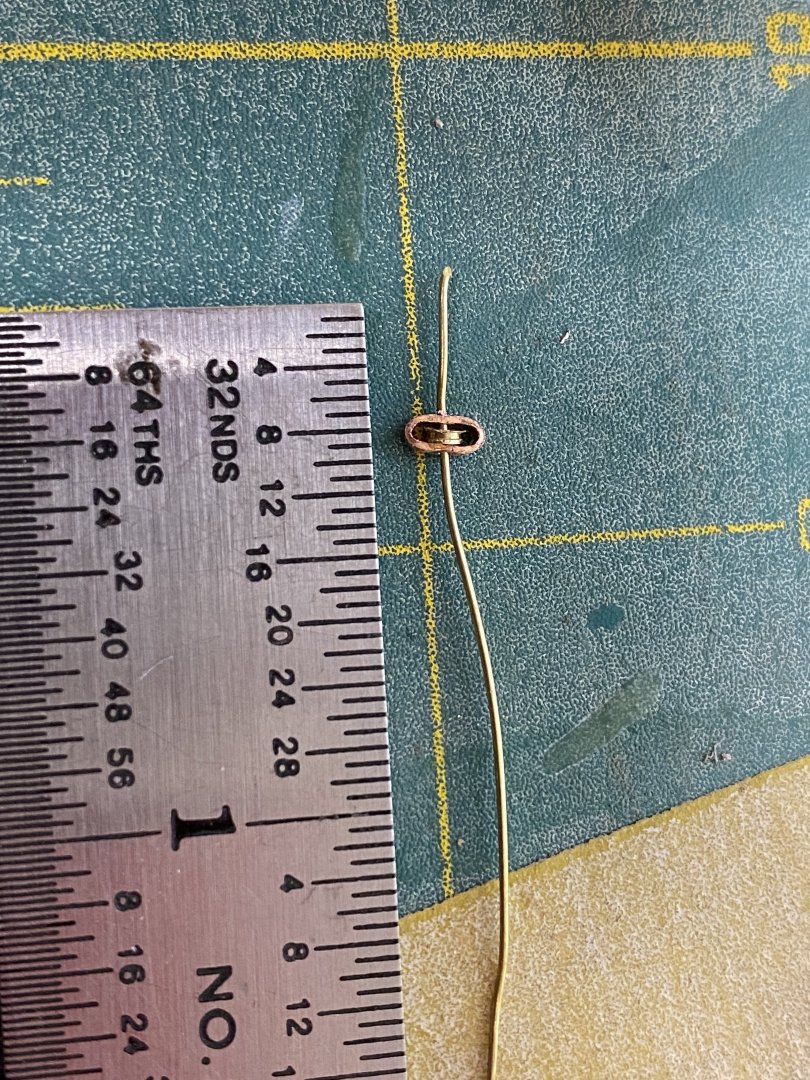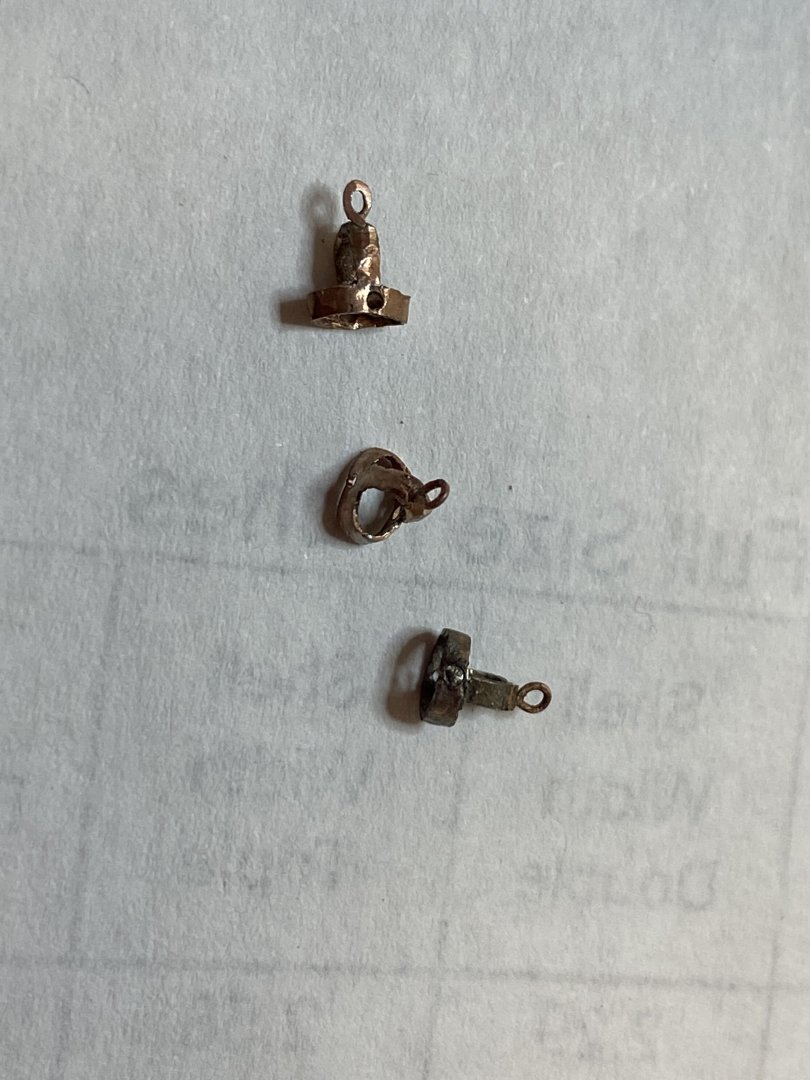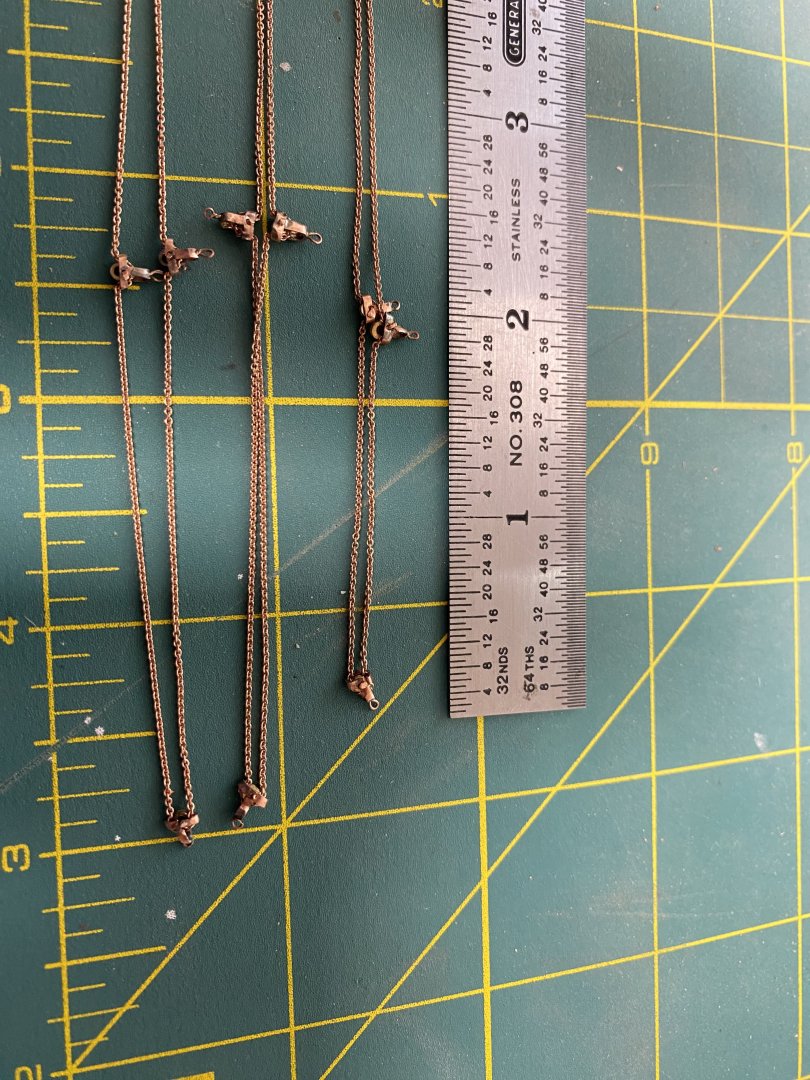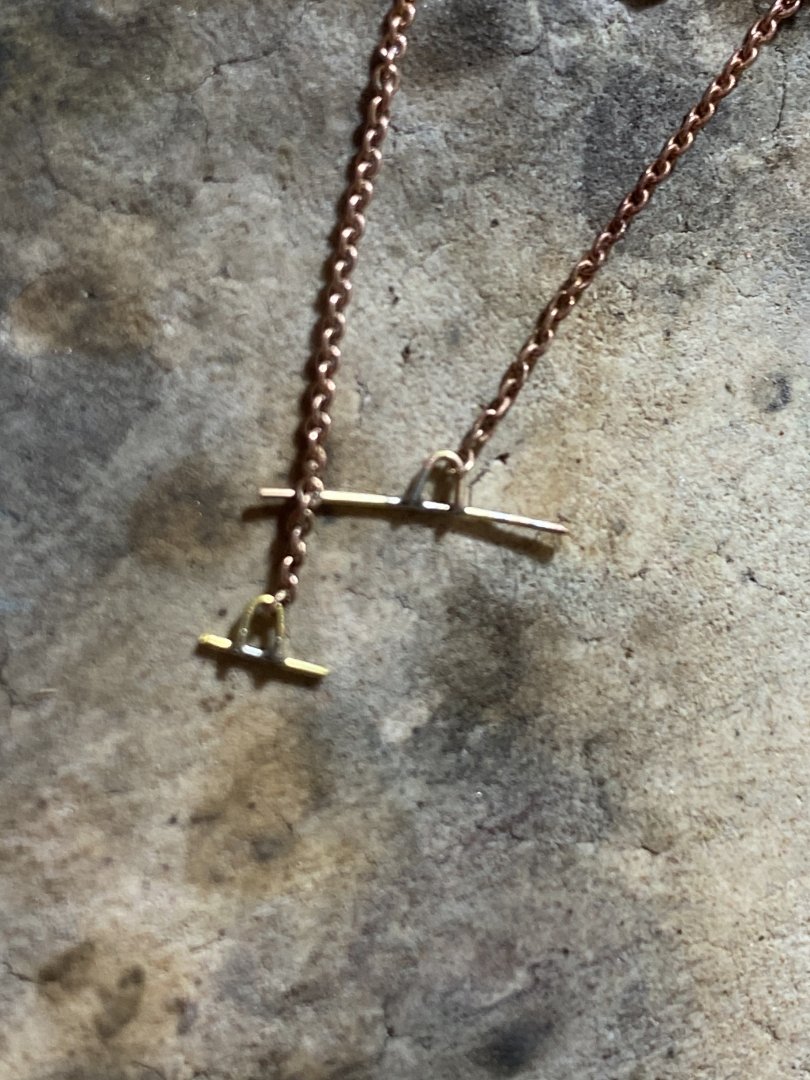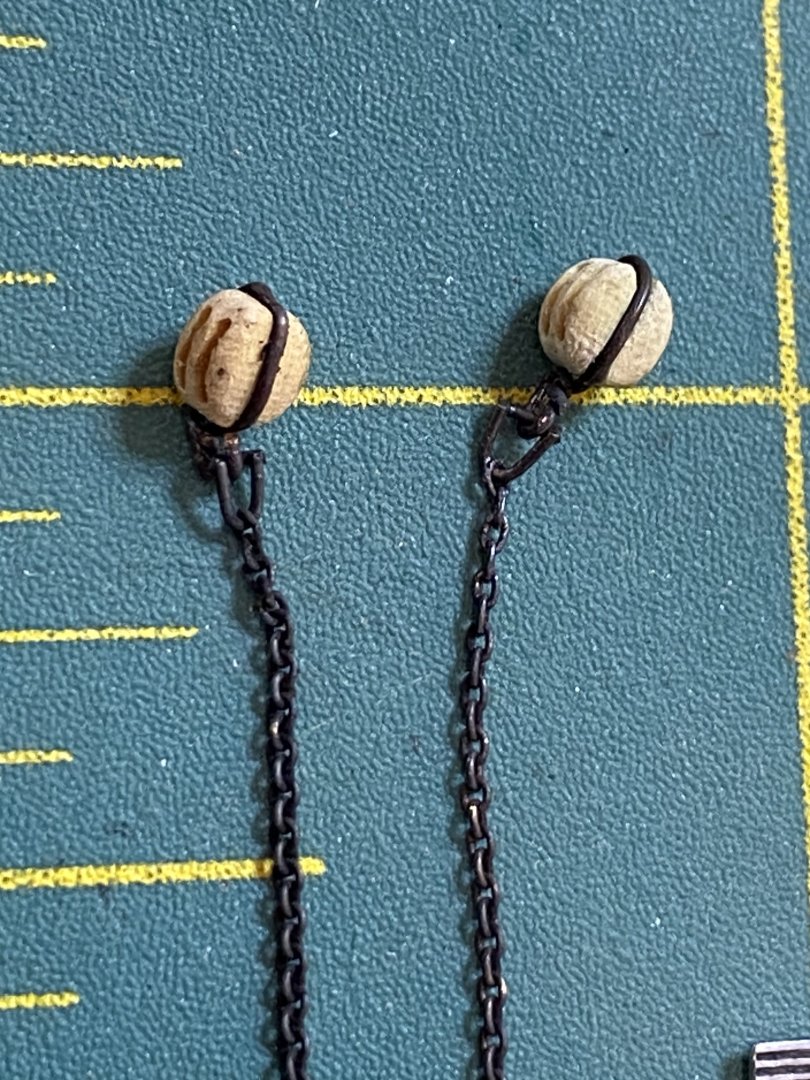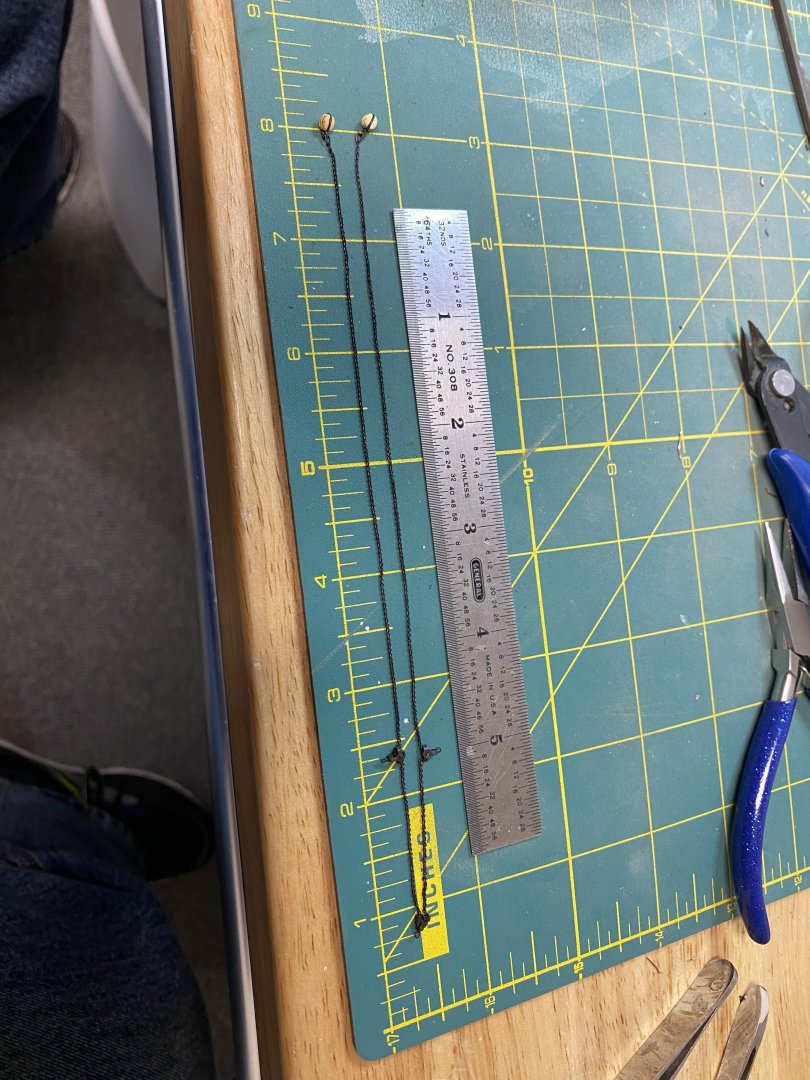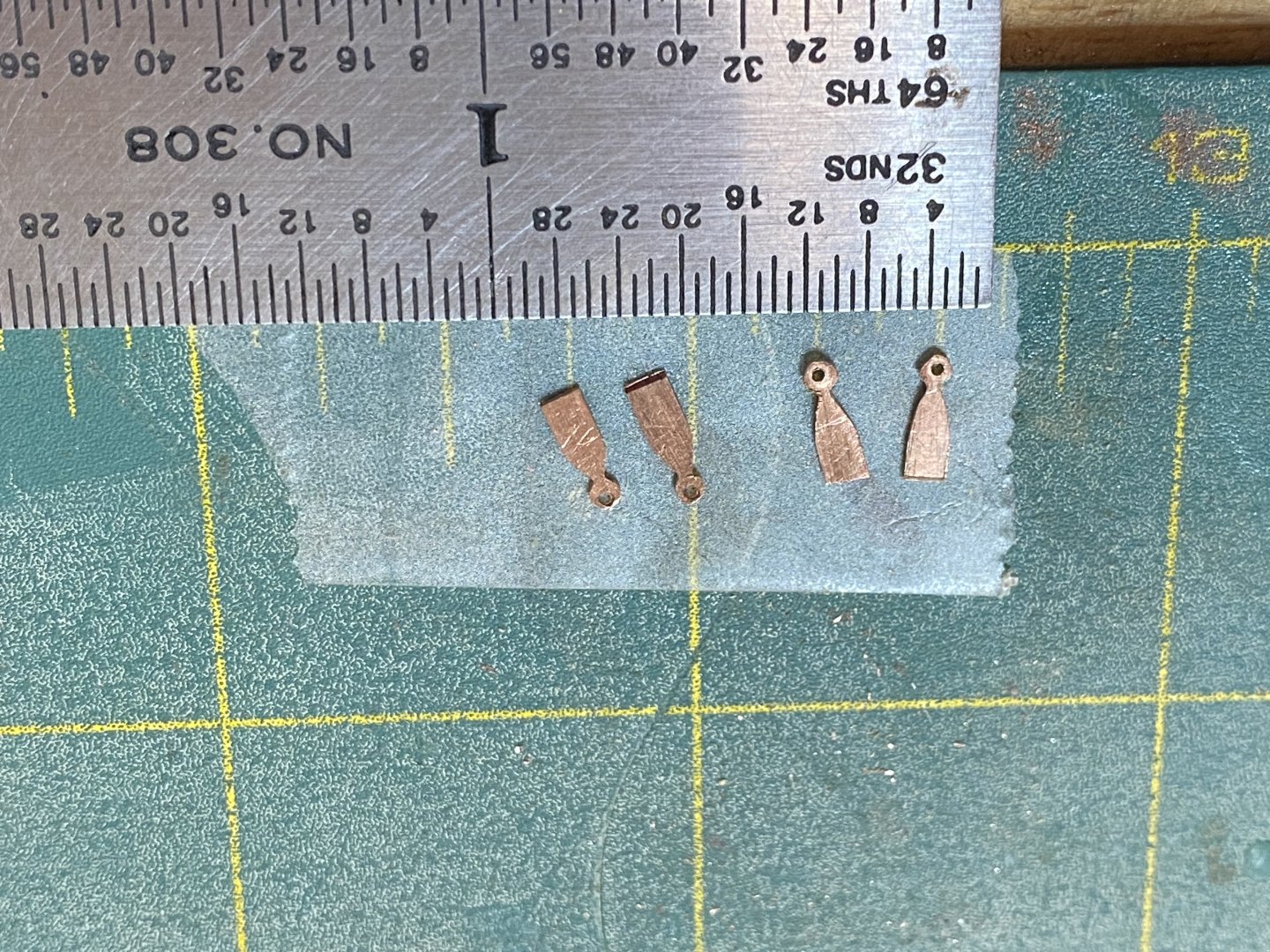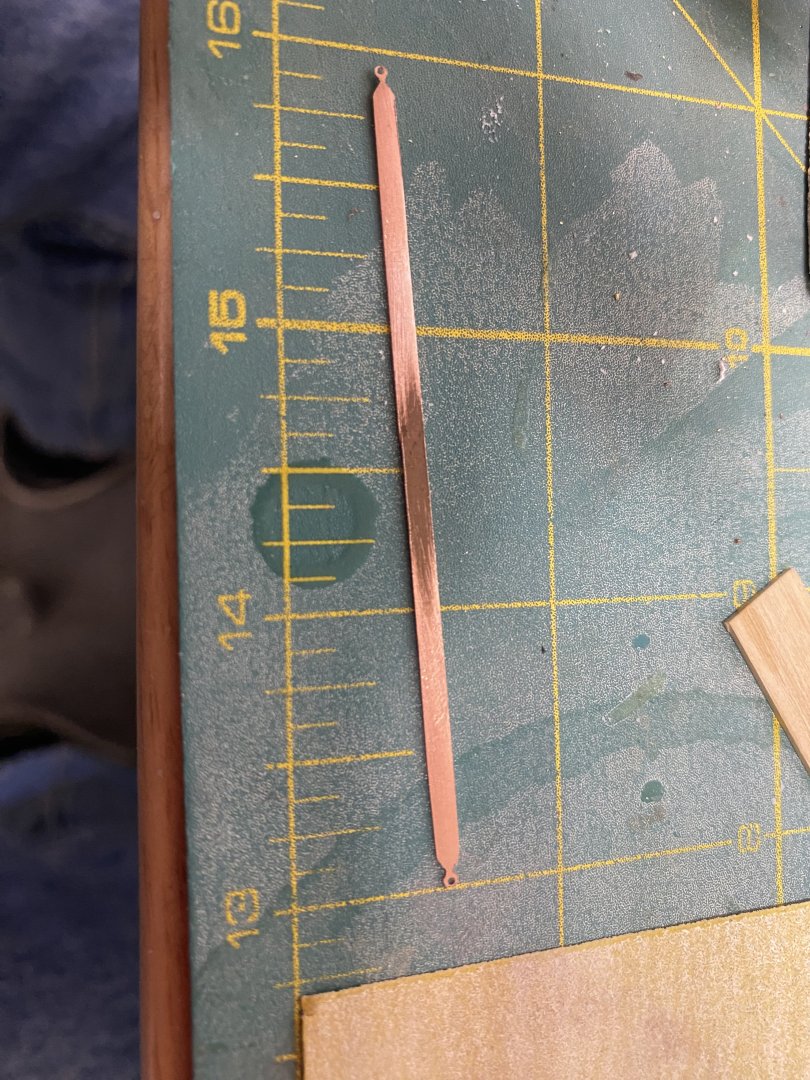
Rick310
NRG Member-
Posts
811 -
Joined
-
Last visited
Content Type
Profiles
Forums
Gallery
Events
Everything posted by Rick310
-
Well done! I live in Belfast, when is your talk? Rick
- 41 replies
-
- steel
- beam trawler
-
(and 2 more)
Tagged with:
-
Coming along nicely. I’ve had to spend much time thinking through the various steps on my Flying Fish build. Rick
- 193 replies
-
- Flying Cloud
- Mamoli
-
(and 1 more)
Tagged with:
-
Thanks George, Glad to get them done! They are not consistent, hard as I tried. probably won’t be noticeable to most people! Tick
- 351 replies
-
- Flying Fish
- Model Shipways
-
(and 1 more)
Tagged with:
-
Thanks for your kind words Rob. It is interesting why McKay did what he did. I believe he left the rigging decisions to Nickels, the ship’s captain. Rick
- 351 replies
-
- Flying Fish
- Model Shipways
-
(and 1 more)
Tagged with:
-
Two months ago, I thought I was close to completing the mizzen mast when I realized I hadn’t considered the parrel band for the topsail yard or the chain halyard with its associated gin blocks. Since I’m not planning on having a working hinge, the band must be mounted on the topmast prior to attaching the topmast cross trees and futtock shrouds. It also occurred to me that mounting the topsail yard to its band would be a challenge once the band was mounted on the mast. Therefore I would need to make the topsail yard as well . This has led me down the rabbit’s hole making the parrel band and chain blocks. The arm for the band was cut out of .030 brass sheet and filed to shape and the holes drilled. The band was made from telescoping copper tube and the soldered together and blackened as illustrated in the plans. I opted not to make this sevel as there or no tackles on the toping lifts as there are on the course yard.I also added shackles to the bracket that holds the blocks for the toping lift for the mizzen course.The gin blocks were made per EdT as described in the YA 3rd book. I found these to be extremely difficult to make with a high casualty rate at every step of the process. I probably attempted 30 or more to get 9 that were acceptable. I decided to make all of them at the same time, fore, main and mizzen. Years ago I purchased shieves but found them to be too big. I mounted them on a round diamond file, which was chucked in the lathe and filed down to shape . Surprisingly, several of them actually sort of work 36 links per inch copper chain was threaded through the gin blocks and shackles were soldered on the ends. After blackening, double blocks were attached to the shackles . After frustrating results trying to blacken copper, I bit the bullet and bought some liver of sulfur which works great, easy to use and can be applied to the copper stropping on the boxwood blocks without staining the wood. the brackets what attach the gin blocks to the cross trees were filed out of copper sheet. I also made the cloverleaf blocks which I will describe next. As an aside, the YA books have been invaluable! Also, so is EdT’s blog on building the YA. Lots of good information there that didn’t make it into the books.
- 351 replies
-
- Flying Fish
- Model Shipways
-
(and 1 more)
Tagged with:
-
Nice start. It will be fun to follow along! Rick
- 193 replies
-
- Flying Cloud
- Mamoli
-
(and 1 more)
Tagged with:
About us
Modelshipworld - Advancing Ship Modeling through Research
SSL Secured
Your security is important for us so this Website is SSL-Secured
NRG Mailing Address
Nautical Research Guild
237 South Lincoln Street
Westmont IL, 60559-1917
Model Ship World ® and the MSW logo are Registered Trademarks, and belong to the Nautical Research Guild (United States Patent and Trademark Office: No. 6,929,264 & No. 6,929,274, registered Dec. 20, 2022)
Helpful Links
About the NRG
If you enjoy building ship models that are historically accurate as well as beautiful, then The Nautical Research Guild (NRG) is just right for you.
The Guild is a non-profit educational organization whose mission is to “Advance Ship Modeling Through Research”. We provide support to our members in their efforts to raise the quality of their model ships.
The Nautical Research Guild has published our world-renowned quarterly magazine, The Nautical Research Journal, since 1955. The pages of the Journal are full of articles by accomplished ship modelers who show you how they create those exquisite details on their models, and by maritime historians who show you the correct details to build. The Journal is available in both print and digital editions. Go to the NRG web site (www.thenrg.org) to download a complimentary digital copy of the Journal. The NRG also publishes plan sets, books and compilations of back issues of the Journal and the former Ships in Scale and Model Ship Builder magazines.



